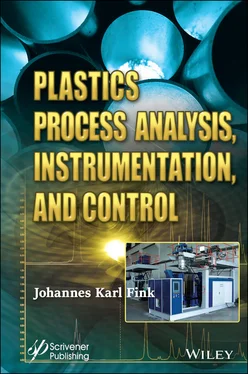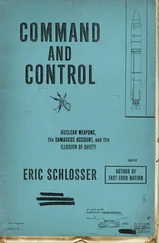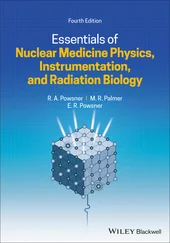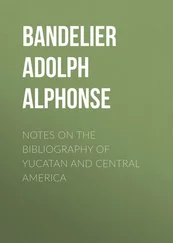| Compound |
Amount/[%] |
Compound |
Amount/[%] |
| H 2 |
0.22 |
CH 4 |
3.65 |
| C 2H 6 |
8.89 |
C 2H 4 |
2.76 |
| C 3H 8 |
13.16 |
C 3H 6 |
13.78 |
| i–C 4H 10 |
0.22 |
n–C 4H 10 |
9.31 |
| 1–C 4H 8 |
7.83 |
i–C 4H 8 |
3.14 |
| 2–C 4H 8t |
1.80 |
i–C 4H 8c |
1.31 |
| C 4H 6 |
0.93 |
i–C 5H 12 |
0.47 |
| n–C 5H 12 |
11.51 |
C 5H 10 |
10.60 |
| Benzene |
0.71 |
C 6H 12 |
9.71 |
Table 1.7 Cracked products from gas material and naphtha (93).
| Compound |
Steam cracker Amount/[%] |
Naphtha Amount/[%] |
| CO |
0.1 |
0.2 |
| H 2 |
0.7 |
1.0 |
| CH 4 |
10.7 |
14.6 |
| C 2H 6 |
3.6 |
3.1 |
| C 2H 4 |
33.1 |
29.9 |
| C 2H 2 |
0.4 |
0.5 |
| C 3H 8 |
0.4 |
0.4 |
| C 3H 6 |
16.8 |
15.2 |
| Propyne |
0.2 |
0.3 |
| Propadiene |
0.3 |
0.4 |
| i–C 4H 10 |
0.0 |
0.0 |
| n–C 4H 10 |
0.1 |
0.2 |
| 1-Butene |
2.1 |
1.4 |
| i-Butene |
0.7 |
2.1 |
| 2-Butene (c) |
0.5 |
0.5 |
| 2-Butene (t) |
0.4 |
0.3 |
| C 4H 6 |
7.2 |
4.9 |
| C 5HC |
5.2 |
4.5 |
| C 6–C 8NA |
1.8 |
2.1 |
| Benzene |
7.8 |
7.9 |
| Toluene |
2.9 |
3.5 |
| EB + Xylenes |
0.6 |
1.1 |
| Styrene |
0.8 |
1.0 |
| C 9HC |
0.7 |
0.9 |
| C 10+ HC |
3.0 |
4.0 |
Table 1.8 Cracked products from liquid material and naphtha (93).
| Compound |
Steam cracker Amount/[%] |
Naphtha Amount/[%] |
| CO |
0.2 |
0.2 |
| H 2 |
1.0 |
1.0 |
| CH 4 |
16.8 |
14.6 |
| C 2H 6 |
6.5 |
3.1 |
| C 2H 4 |
31.8 |
29.9 |
| C 2H 2 |
0.7 |
0.5 |
| C 3H 8 |
3.2 |
0.4 |
| C 3H 6 |
16.1 |
15.2 |
| Propyne |
0.3 |
0.3 |
| Propadiene |
0.5 |
0.4 |
| i–C 4H 10 |
0.0 |
0.0 |
| n–C 4H 10 |
1.0 |
0.2 |
| 1-Butene |
1.0 |
1.4 |
| i-Butene |
0.9 |
2.1 |
| 2-Butene (c) |
0.4 |
0.5 |
| 2-Butene (t) |
0.3 |
0.3 |
| C 4H 6 |
4.9 |
4.9 |
| C 5HC |
2.6 |
4.5 |
| C 6–C 8NA |
0.5 |
2.1 |
| Benzene |
6.0 |
7.9 |
| Toluene |
1.7 |
3.5 |
| EB + Xylenes |
0.3 |
1.1 |
| Styrene |
0.6 |
1.0 |
| C 9HC |
0.3 |
0.9 |
| C 10+ HC |
2.3 |
4.0 |
An exemplary embodiment of the present disclosure includes a method of producing high-quality liquid fuels that includes mixing a solid plastic waste with a metal hydride and a supported metal catalyst; gasifying the mixture; and producing the high-quality liquid fuels.
An exemplary embodiment of the present disclosure includes a method of producing high-quality liquid fuels that includes melting a solid plastic waste; adding a metal hydride and a supported metal catalyst; and producing the high-quality liquid fuel.
An exemplary embodiment of the present disclosure includes a high-quality fuel prepared by a process that includes mixing a solid plastic waste with a metal hydride and a supported metal catalyst; gasifying the mixture; and producing the high-quality liquid fuel.
An exemplary embodiment of the present disclosure includes a high-quality fuel prepared by a process that includes melting a solid plastic waste; adding a metal hydride and a supported metal catalyst; and producing the high-quality liquid fuel.
1.15.3.5 Decomposition in a Hot Oil Medium
The decomposition of waste plastic has been investigated at a relatively low temperature (95, 96). The process can decompose a mixed stream of waste plastic at a temperature generally less than 375°C in a hot oil medium. The process converts the polymeric structure of the waste plastic or plastics to smaller chemical molecules such as the monomeric units and related chemical structures at a relatively lower temperature. It also serves the market for such products.
The low-molecular weight distillate from the waste plastic may help reduce the demand for imported petroleum products and help decrease our dependence on foreign crude oil.
Before mixed plastic wastes were studied, each individual component plastic was thermally decomposed to have a basis for the difference between mixed and individual resource recovery, and whether the mixed plastic wastes when thermally decomposed had an unexpected interaction.
A laboratory setup was used for preliminary experimentation which consisted of a thermally regulated flask with water condenser. The flask temperature was regulated to within 5°C and the overhead distillate condensed with 16°C water while the amount of uncondensed overhead gas was measured. The SAE 50 oil and the appropriate plastic resin were placed into the flask and the flask was purged with nitrogen before heating began. After the proper time at temperature, the flask was quenched.
The above tests indicated that the apparent optimum temperature for the hot oil decomposition of PE and PP was about 425°C, about 400°C for PS, about 375°C for poly(ethylene terephthalate) (PET), and about 325°C for PVC. Thus a temperature staging process was employed with mixed waste plastics. PET was not employed in this experiment since its solid decomposition product tended to clog the apparatus. A further aspect in omitting PET was that recent trends in recycling of waste plastic have been to separate out the bottles made of PET and recycle them directly to the bottle manufacturer.
Then, a three-stage temperature experiment was performed using 270°C for 20 min , 410°C for 30 min , and 450°C for 45 min .
1.15.3.6 Catalytic Cracking
It has been proposed to pyrolize or catalytically crack the waste plastic so as to convert high molecular weight polymers into volatile compounds having a much lower molecular weight (97). The volatile compounds, depending on the process employed, can be either relatively high boiling liquid hydrocarbons useful as fuel oils or fuel oil supplements or light to medium boiling hydrocarbons useful as gasoline-type fuels or as other chemicals.
Catalytic cracking of mixed waste plastic is a well-known process. For example, a method for controlling the pyrolysis of a complex waste stream of plastics to convert such a stream into useful high-value monomers or other chemicals has been presented (98). Here the catalyst and the temperature conditions were identified that permit the decomposition of a given polymer in the presence of others, without substantial decomposition of the other polymers (98).
During catalytic cracking, five main families of products are produced (97):
1 Gases,
Читать дальше












